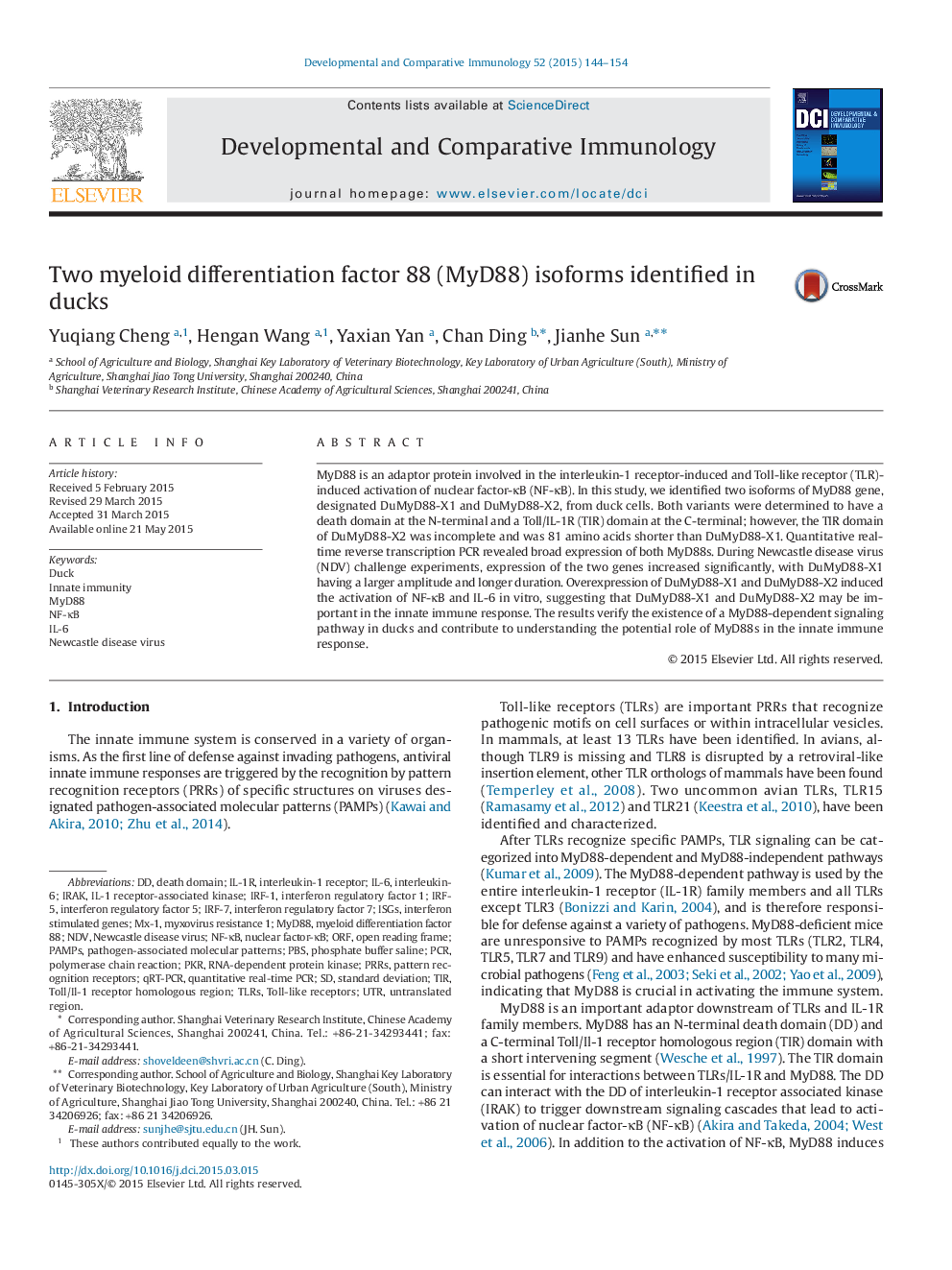| Article ID | Journal | Published Year | Pages | File Type |
|---|---|---|---|---|
| 2428965 | Developmental & Comparative Immunology | 2015 | 11 Pages |
•Two myeloid differentiation factor 88 isoforms (DuMyD88-X1 and DuMyD88-X2) were identified in ducks.•The expression of the two MyD88 isoforms showed different expression patterns in the healthy and NDV infected duck tissues.•Overexpression of DuMyD88-X1 and DuMyD88-X2 induced the activation of NF-κB and IL-6.•DuMyD88-X1 more strongly activated NF-κB signal pathway compared to DuMyD88-X2.
MyD88 is an adaptor protein involved in the interleukin-1 receptor-induced and Toll-like receptor (TLR)-induced activation of nuclear factor-κB (NF-κB). In this study, we identified two isoforms of MyD88 gene, designated DuMyD88-X1 and DuMyD88-X2, from duck cells. Both variants were determined to have a death domain at the N-terminal and a Toll/IL-1R (TIR) domain at the C-terminal; however, the TIR domain of DuMyD88-X2 was incomplete and was 81 amino acids shorter than DuMyD88-X1. Quantitative real-time reverse transcription PCR revealed broad expression of both MyD88s. During Newcastle disease virus (NDV) challenge experiments, expression of the two genes increased significantly, with DuMyD88-X1 having a larger amplitude and longer duration. Overexpression of DuMyD88-X1 and DuMyD88-X2 induced the activation of NF-κB and IL-6 in vitro, suggesting that DuMyD88-X1 and DuMyD88-X2 may be important in the innate immune response. The results verify the existence of a MyD88-dependent signaling pathway in ducks and contribute to understanding the potential role of MyD88s in the innate immune response.
